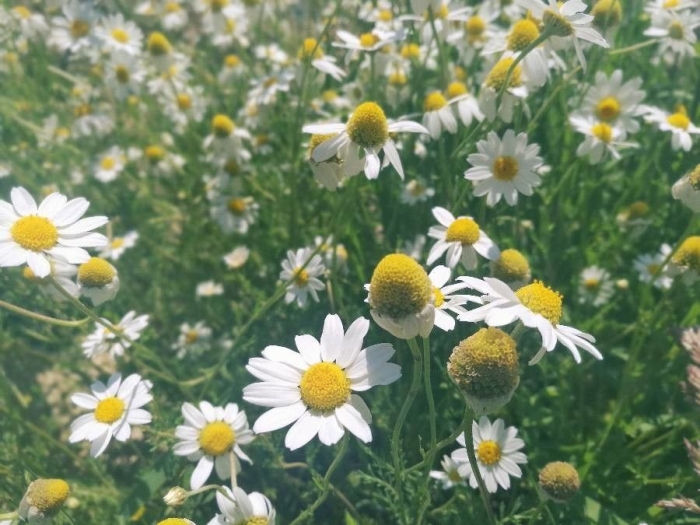Roman Chamomile
(Chamaemelum nobile)
Roman Chamomile (Chamaemelum nobile)
/
/

Ana Curic
CC BY-SA 4.0




















































Estimated Native Range
Summary
Roman Chamomile is valued for its ornamental and aromatic qualities, making it a popular choice for herb gardens, borders, and as a fragrant ground cover. It is also used for its medicinal properties and is harvested for chamomile tea, which is reputed for its calming effects. The plant is relatively easy to maintain, requiring minimal care once established. It prefers full sun to part shade and can tolerate a range of soil types, provided they have good drainage. While generally pest-free, it can occasionally suffer from fungal diseases in overly moist conditions.CC BY-SA 4.0
Plant Description
- Plant Type: Herb
- Height: 0.3-0.5 feet
- Width: 0.5-1 feet
- Growth Rate: Moderate
- Flower Color: Yellow, White
- Flowering Season: Summer
- Leaf Retention: Evergreen
Growth Requirements
- Sun: Full Sun, Part Shade
- Water: Medium
- Drainage: Slow, Medium, Fast
Common Uses
Bee Garden, Border Plant, Butterfly Garden, Drought Tolerant, Edible*Disclaimer: Easyscape's listed plant edibility is for informational use. Always verify the safety and proper identification of any plant before consumption., Fragrant, Groundcover, Low Maintenance, Potted Plant, Rock Garden, Salt Tolerant, Showy Flowers
Natural Habitat
Native to dry fields, gardens, and sandy soils in Western Europe and North Africa
Other Names
Common Names: English Chamomile, Ground Apple, Low Chamomile, Mother’s Daisy, Whig Plant, Chamomile, Garden Chamomile, Römische Kamille, Romersk Kamomill, Römische Hundskamille
Scientific Names: , Chamaemelum nobile, Anthemis nobilis, Ormenis nobilis, Chamaemelum nobile var. discoideum, Chamaemelum nobile var. nobile, Anthemis aurea, Anthemis santolinoides, Chamomilla nobilis, Chamaemelum nobile f. discoideum
GBIF Accepted Name: Chamaemelum nobile (L.) All.